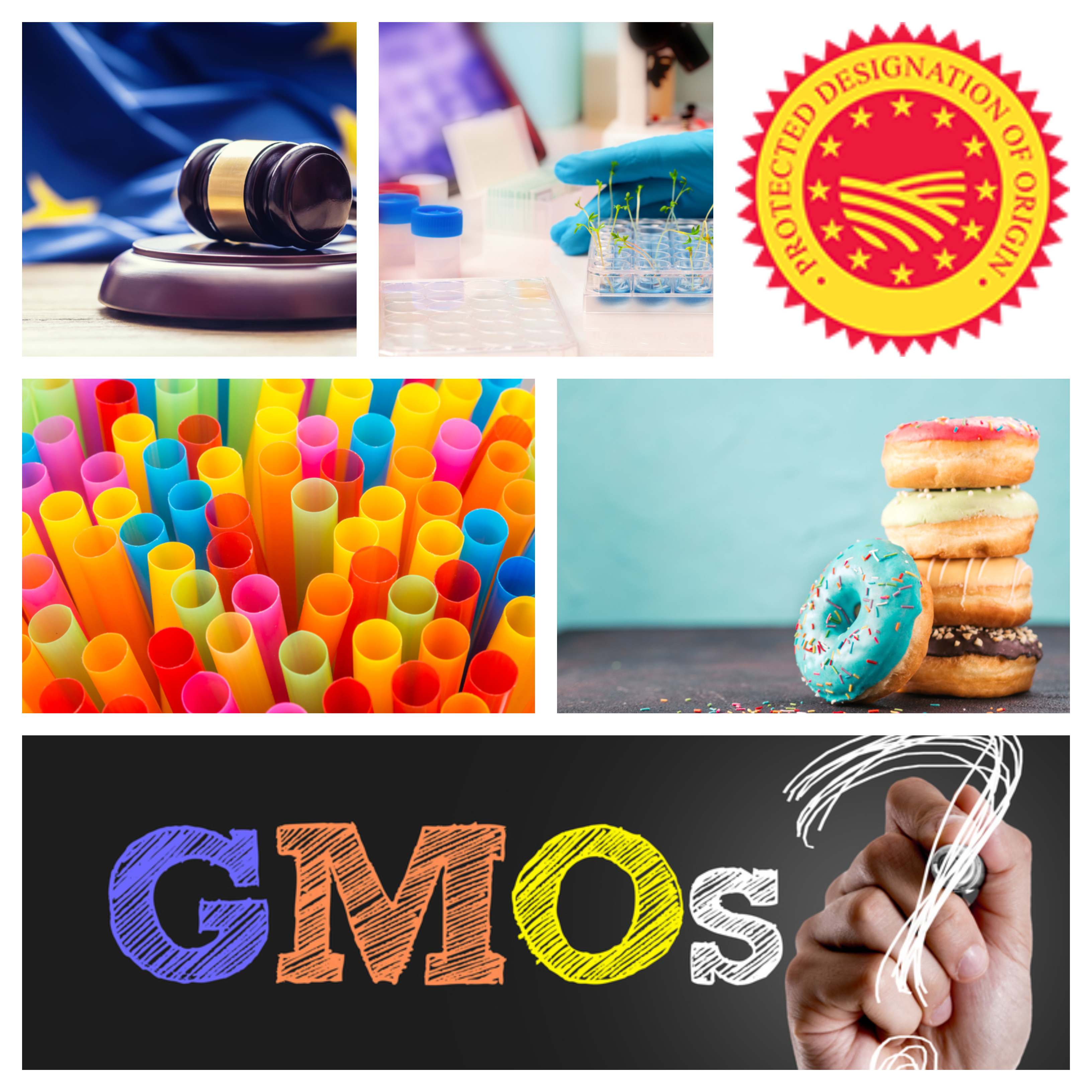The EU wants to promote reusable containers by restricting access to disposable cups, glasses, trays, boxes, food containers, cutlery, stirrers, straws and bags, expected to come into effect by 2021.
Reusable alternatives
David McDowell, retired professor, Food Studies, Ulster University and acting chairman of the UK advisory committee on the microbiological safety of food, part of the UK Food Standards Agency, believes a ban or limited access to food & beverage packaging will lead to the spread of foodborne pathogens.
In his report, commissioned on behalf of Pack2Go Europe, he says many cases of foodborne illness are transient and mild, limited to malaise, nausea and vomiting. Unreported, these cases are usually resolved without reference to health authorities.
“However, a significant number of more severe cases of foodborne illness caused by cross contamination within the food chain, involve life-threatening kidney and liver failure, temporary or persistent paralysis, dysfunction of the nervous system and brain, and/or death, particularly among higher risk groups ie young, old, pregnant or immunocompromised people,” he said.
Food and beverage packaging’s sole purpose is to guarantee food hygiene, reducing the risk of foodborne illness, by protecting public health and ensuring consumer safety.
Foodborne bacteria and viruses can get on food or in drinks when they are put into contaminated containers or when people handling contaminated containers then handle food.
The bacteria/viruses can also be transferred from container to container by contact with, for example, a vending machine dispensing unit where one or more contaminated reusable containers were earlier refilled and then come into contact with the dispenser.
To avoid this, most public health authorities recommend using single use containers in food service situations or careful sanitizing of reusable alternatives.
What concerns McDowell is the EU proposal has allegedly not been subject to a detailed impact assessment for hygiene, health and safety risks.
“These matters merit a careful debate by EU legislators than has been the case to date. It would be prudent to avoid unnecessary risks with food safety and public health,” he added.
“Even if they think they are doing the job properly, consumers typically fail to clean reusable containers adequately, leaving behind bacteria and viruses that you don’t want near food.
“They then carry this dangerous material around in reusable bags alongside other items, which present a high risk of cross-contamination.
“If consumers bring these containers for refill at takeaway food outlets, coffee shops or use them with vending machines or water fountains, there is a high risk these contaminants will be transferred to other people’s food.”
'Scare-tactic argument'
However, Claire Koelsch Sand, owner, Packaging Technology and Research, & adjunct professor, CalPoly and Michigan State University, US, disagrees and claims McDowell may be scaremongering people.
“This scare-tactic argument comes up again every few years. And, it is unfortunate. The central issue to behind the resistance (and purpose of food service single-use packaging) is convenience and labor,” she said.
“Reusable containers require more labor (at restaurants) to wash reusable dishware. Reusable container systems also require altered logistics to address how a restaurant can regain its reusable dishware from customers who take the product to-go and do not eat in the restaurant.
“I have been considering these issues similar to those in the industry. There are many ways to facilitate restaurants to regain containers, wash and reuse them. These include reduced costs for new food when a reusable container is brought back and standardization of containers so they can be brought back to any restaurant.
“There is a major opportunity to innovate in terms of logistics and labor.”
She added, suggesting a ban on single-use plastics will cause microbial growth assumes reusable dishware will not be washed properly but modern dishwasher processes kill these organisms.
“It also ignores the years that consumers have successfully used reusable dishes,” said Koelsch.
“Consumers have and do use dishes at home, in restaurants and these dishes are properly washed (by them or restaurant staff) and then reused (by those consumers or other consumers).
“The dabbawalla system in Mumbai has been using a reusable lunch packaging system for more than a century.
“To suggest that consumers and restaurant staff cannot properly wash containers is a very weak argument and frankly a bit insulting to consumers and restaurant staff and management.
“To suggest that packaging, logistics, and operational efficiency experts cannot devise a system to enable reusable dishware for food service curtails innovation and discounts the ability of these experts to truly innovate to address a problem that is quite urgent.”
Marine littering
According to Pack2Go the European Commission ‘rushed out its proposals’ in May last year to reduce the marine littering of plastics but without any assessment of the food hygiene and public health risks.
The proposal for an EU Directive on the reduction of the impact of certain plastics products on the environment aims to reduce the amount of plastic litter in oceans and seas. The proposal calls to promote more reuse.
‘Foodborne’ means agents of infection like bacteria or viruses that persist or grow on food.
‘Foodborne bacteria’ includes; Salmonella, Verocytotoxigenic E. coli, Listeria, Campylobacter or ‘foodborne viruses’ such as the norovirus. Both types of pathogen are not visible to the human eye.
To sanitize food/drink containers, it is generally recommended the washing water be around 70-80°C and that detergent is used.
‘Cross contamination’ is the transfer of bacteria or viruses to people, to food and drink or to food contact surfaces (containers; food preparation surfaces; protective clothing like sanitary gloves and aprons; coffee and soda machines; water fountains, vending machines).
Food & Beverage service packaging is used; in coffee houses; vending machines; hospitals, nursing homes, dental surgeries; crisis situations; festivals; private homes.
But, Fernando Rodríguez-Mata, consultant, Pack2Go Europe, said food & beverage service packaging and related items are not the biggest source of marine litter.
“The Commission’s own statistics claim plastics bottles and caps, cigarette butts, and crisp packets and sweets wrappers account for 60% of the single use plastics litter found on EU beaches. Yet no restriction of these is proposed,” he said.
“Food & beverage service packs and related items together account for 8-9% of single use plastic litter found and 4-5% of all litter found on EU beaches. Yet they are being subjected to the toughest measures – market consumption reduction measures and in some cases bans.”
Mike Turner, MD, Graphic Packaging International Foodservice Europe, and president of Pack2Go Europe, said the unacceptable littering of used packaging and other products by consumers, which has contributed to the presence of plastics in the marine environment, can be reduced effectively by implementing the EU’s newly adopted rules on waste.
“The EU single use proposal should take a positive approach, not a punitive one, by setting collection targets that would accelerate more and better collection and recycling of items used for serving food and drinks,” he said.
“That would help deliver a “win-win” situation – less litter and a circular economy for all our products.”
Speaking to Mariam Jomha, editor, PreScouter Journal, which shares academic knowledge and problem-solving skills to challenges faced in industry, she said: “From a microbiology background, I can relate to Professor McDowell's concerns.
“In theory, any item that comes in contact with food may serve as a potential vehicle for contamination, be it disposable or reusable. The risk obviously goes up upon reusing an item multiple times and also taking into consideration a consumer might not do the best job cleaning it after every use.
“But, is the risk big enough to call off the ban and sound the alarms? Well, if the plastic problem was not as bad as it is today, I would say a more cautious approach is warranted.
“On the brighter side of things, research in the packaging space has really taken off and is now focusing on developing new packaging materials that provide additional functionality such as shelf life extension and replacing plastic with more bio-based components.
“One of the innovations PreScouter profiled involved an antimicrobial packaging made from halloysite nanotubes infused with essential oils. Developments such as this could address Professor McDowell's concerns by impeding microbial growth on reusable products.
“For single-use plastic producers, the ban may serve as an opportunity to explore new possibilities that could even prove to be more cost-effective than plastic-based products.
“In this context, it is worth noting that a number of startups have developed cutting-edge technologies to handle all kinds of plastic waste in an environmentally-sound, practical and profitable way.
“For those willing to do their homework, some incredible solutions are out there. Implementing some of these newer recycling innovations could be as effective as a ban.”
Food Packaging Forum
According to Dr. Birgit Geueke, scientific officer of the Food Packaging Forum Foundation, based in Zurich, Switzerland, food hygiene is an important topic, which must not be compromised.
“It needs to be carefully considered when replacing single-use with reusable packaging. High hygienic standards could be achieved by, for example introducing take-back systems for reusable items where a final cleaning step is carried out at the point of sale by trained staff.”
Shambhu Nath Jha, senior research consultant, Fact.MR market research firm, said the ban on single use plastic was enacted with overwhelming majority, however, countering the massive challenge of environmental pollution will entail a more concerted effort.
“Be it single use or reusable, plastics are eventually going to pile-up or drain down, although the “pseudo-solution” ban can reduce the pollution levels to an extent,” he said.
“Solving the behemoth issue of environmental pollution will require a holistic and efficient waste management system, capacity building for recyclability, and investment in WTE (waste to energy) plants. It will be interesting to see how the events unfold down the line.”
Prof Dr. Dirk Bockmühl, professor of hygiene and microbiology at the Rhine-Waal University of Applied Sciences in Kleve, Germany, concluded the hygiene risk created by replacing single use packaging in the food industry is largely dependent on the food in question and the type of packaging.
“Based on our current understanding, single use packaging and certain service packaging types – in particular for raw and hygiene-critical animal foods – probably play a significant role in ensuring food safety, however, using reusable cutlery and tableware is certainly far less critical,” he added.
“In many areas, for example fruit and vegetable packaging and reusable carrier bags, there is a need for further research to better assess the potential hygiene risk.”
Professor Roberto Foschino, co-ordinator, Food Microbiology Division, Department of Food, Environmental and Nutritional Sciences, Università degli Studi di Milano, Italy, agrees.
He said it would have been interesting to evaluate the effect of different type of plastic (PP, HD-PE, LD-PE, PVC, PS, PET) and the intended use of the product (food containers, packets and wrappers, cutlery, dishes, straws, beverage containers and their lids, bottles) on maintenance of applying hygiene measures in food preparation, distribution, recycling practices and eating habits.
“To assess costs and benefits of control measures for the consumers’ protection is crucial getting data on occurrence and food disease burden and knowledge of source attribution,” he said.
“Supplementary investigations addressed to the risk assessment associated with replacing or reusing food and beverage service packaging and related items should be recommended. Furthermore, it would be advisable to study the hygienic characteristics of biodegradable materials that are alternative to plastic for single-use items, as these would be the most likely proposal of substitution.”




